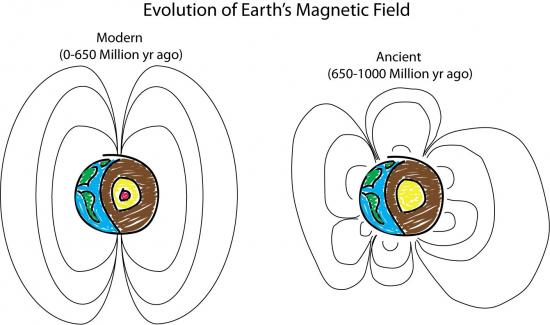
The earth has two magnetic poles and the magnetic field running between the north and south poles keeps harmful cosmic rays at bay. However, scientists believe that the earth's magnetic field was not always dipolar, but, in fact, had multiple pairs of magnetic poles.
The earth's magnetic field is generated by the movement of molten iron as it moves in the earth's upper core. This movement is caused by the gradual solidification of the inner core. To find out what the earth's magnetic field was like when the earth's core was just beginning to solidify, scientists studied rocks that carried the magnetic signatures from when they were formed.
While the studies suggested that the earth has had a dipolar magnetic field for about 4 billion years, Neoproterozoic Era, which played out between 0.5 and 1 billion years ago, to verify whether this was due to a major change like the core's solidification, scientists at Carnegie Institution for Science modeled the planet's thermal history.
By going back as far as 4.5 billion years, the models showed that the earth's core should have begun to solidify about 650 million years ago.
"What I found was a surprising amount of variability," scientist Peter Driscoll said. "These new models do not support the assumption of a stable dipole field at all times, contrary to what we'd previously believed."
According to Driscoll, the earth's magnetic field, billion year ago, transitioned from a dipolar field to one with several poles, after which things went back to a dipolar set up.
"These findings could offer an explanation for the bizarre fluctuations in magnetic field direction seen in the geologic record around 600 to 700 million years ago," Driscoll added. "And there are widespread implications for such dramatic field changes."
According to the Carnegie Science, this discovery could have an impact on how we believe continental movements and climatic changes took place in the past.
















